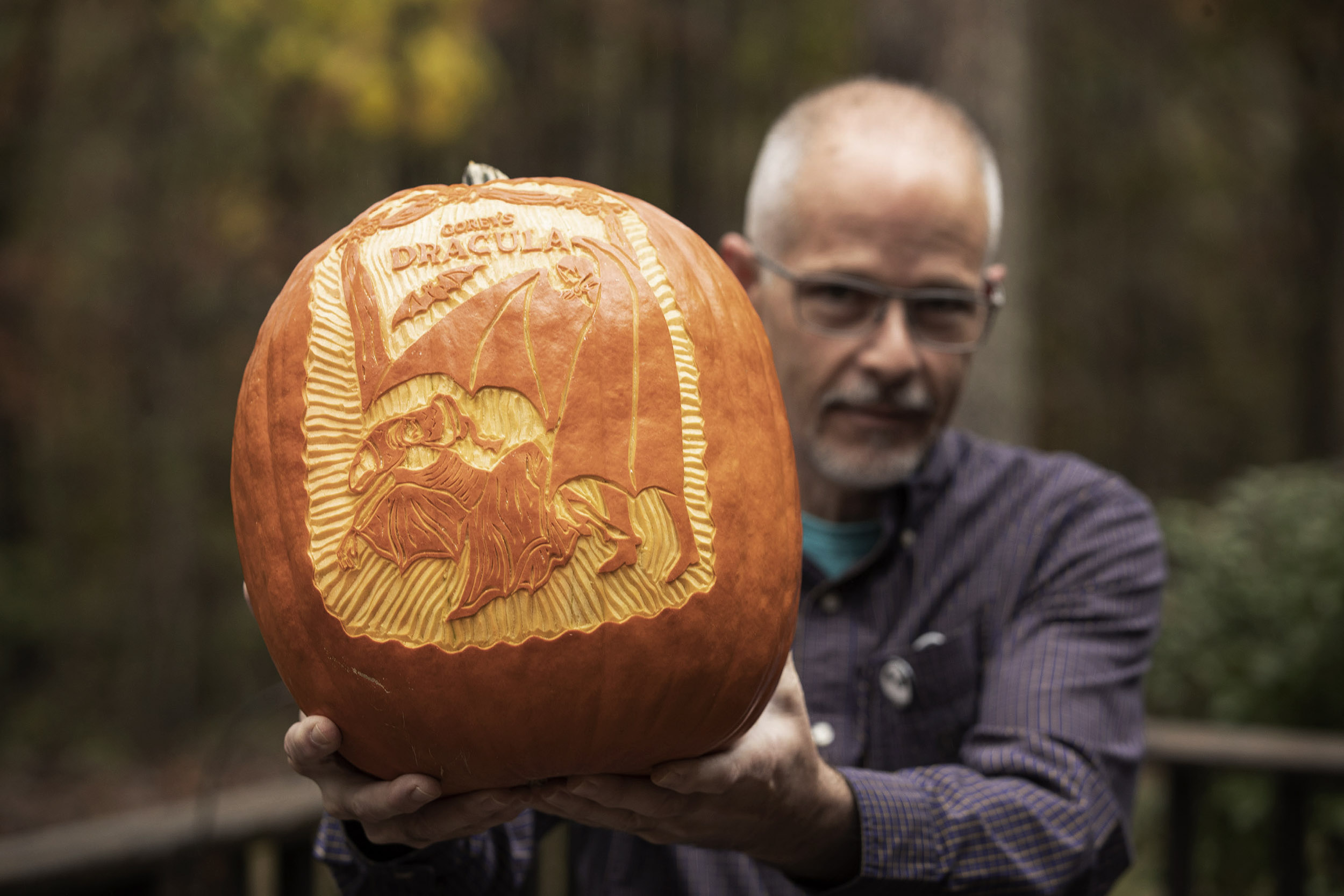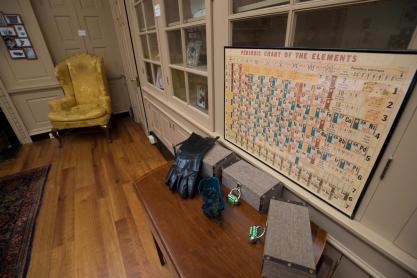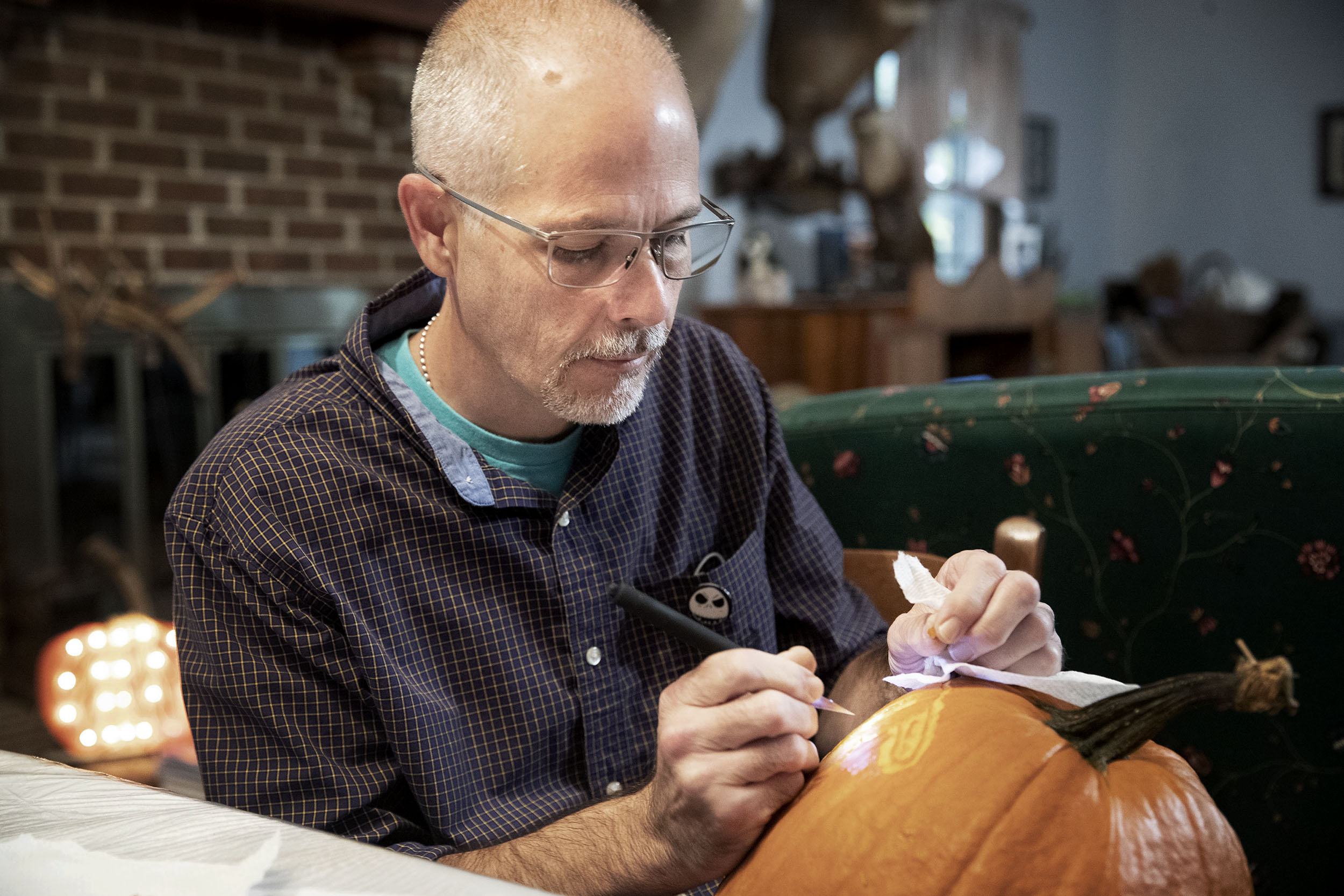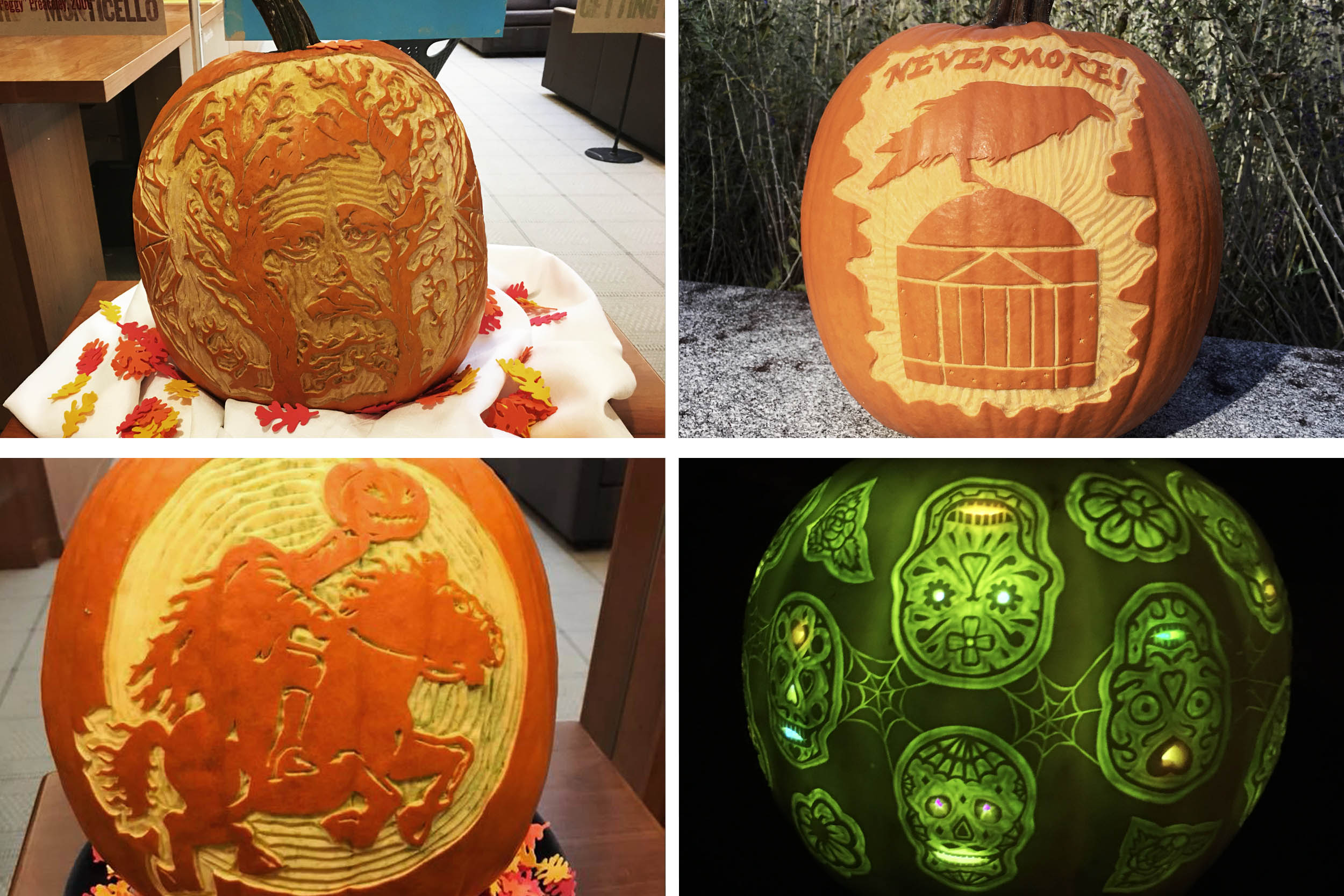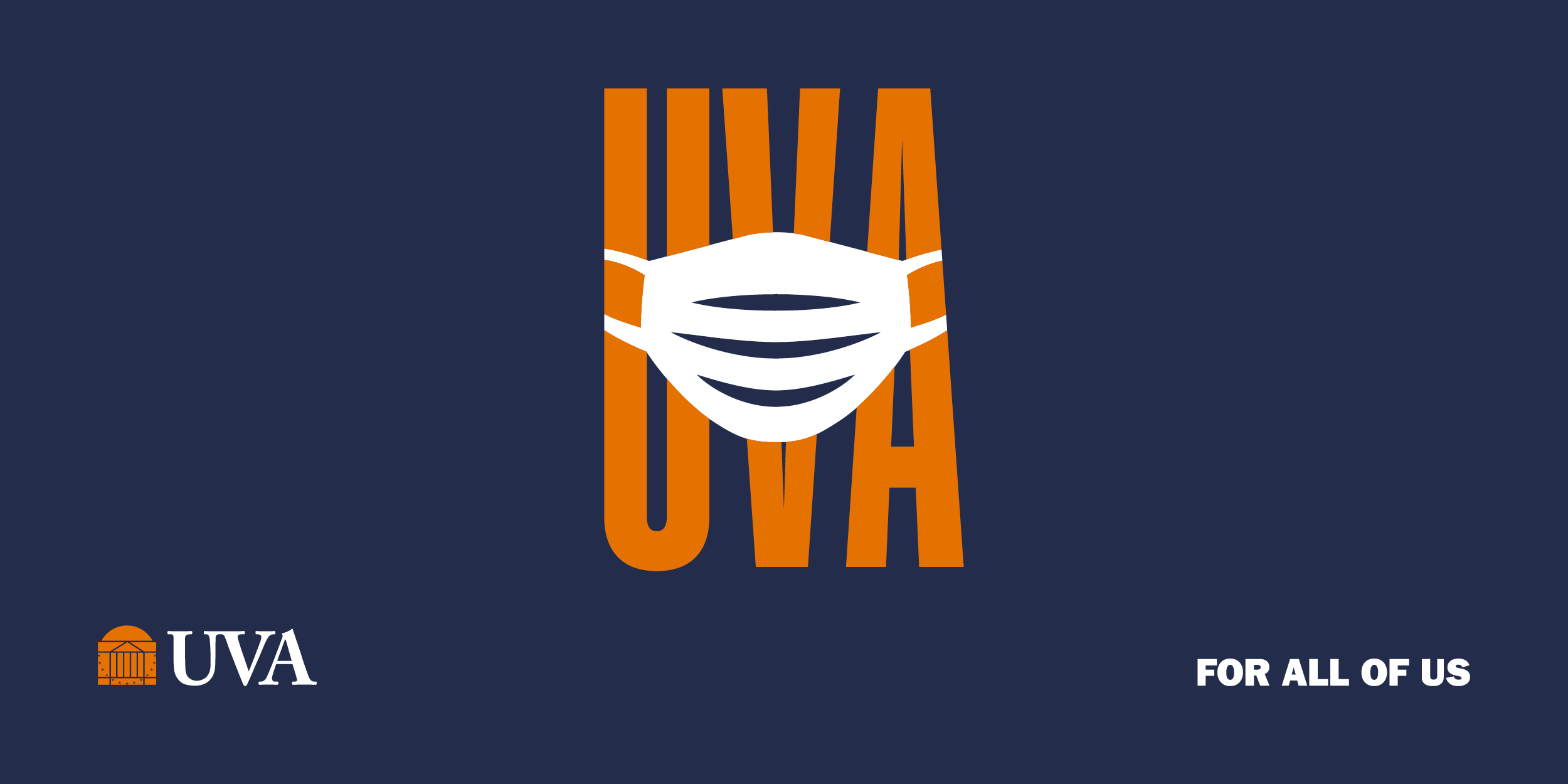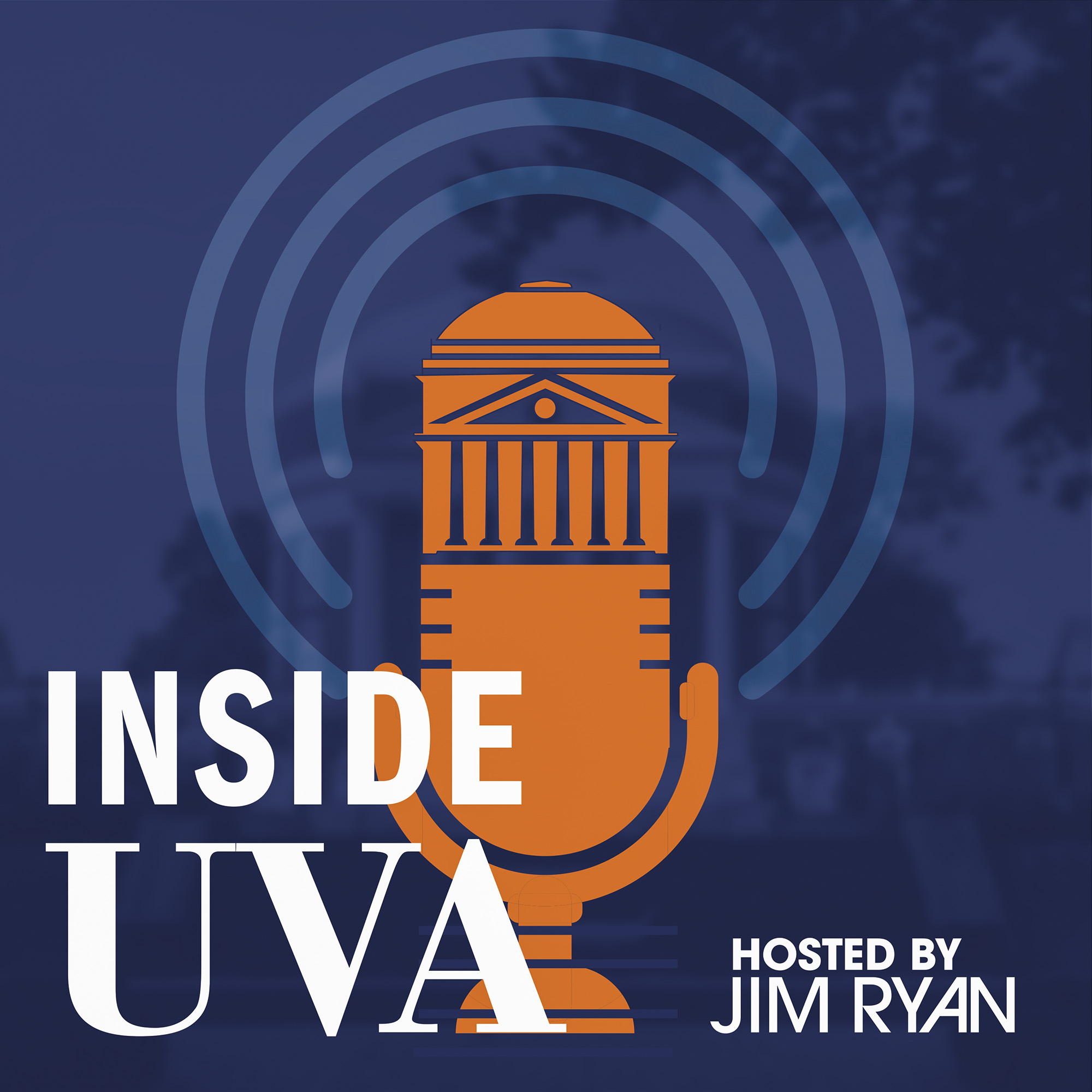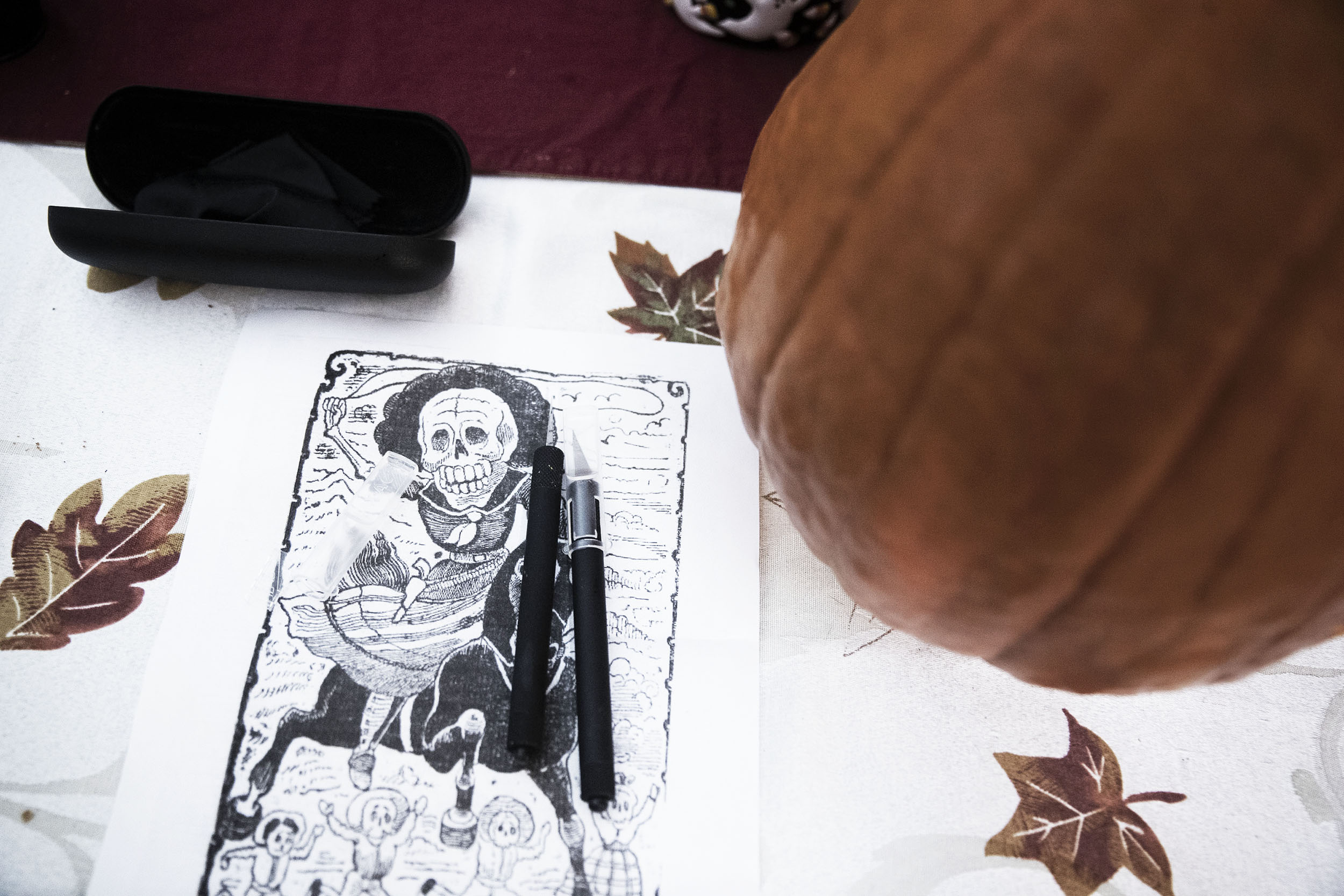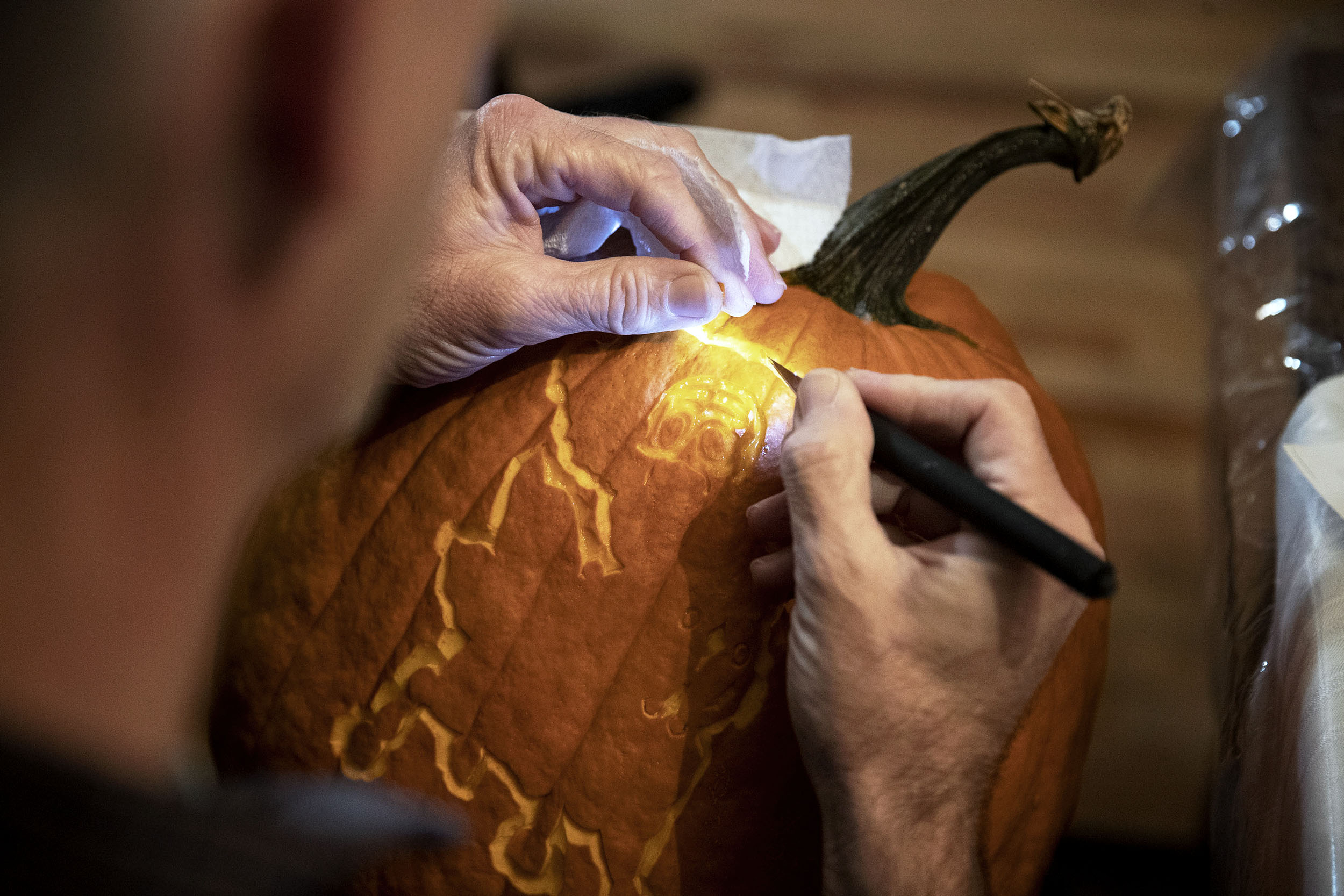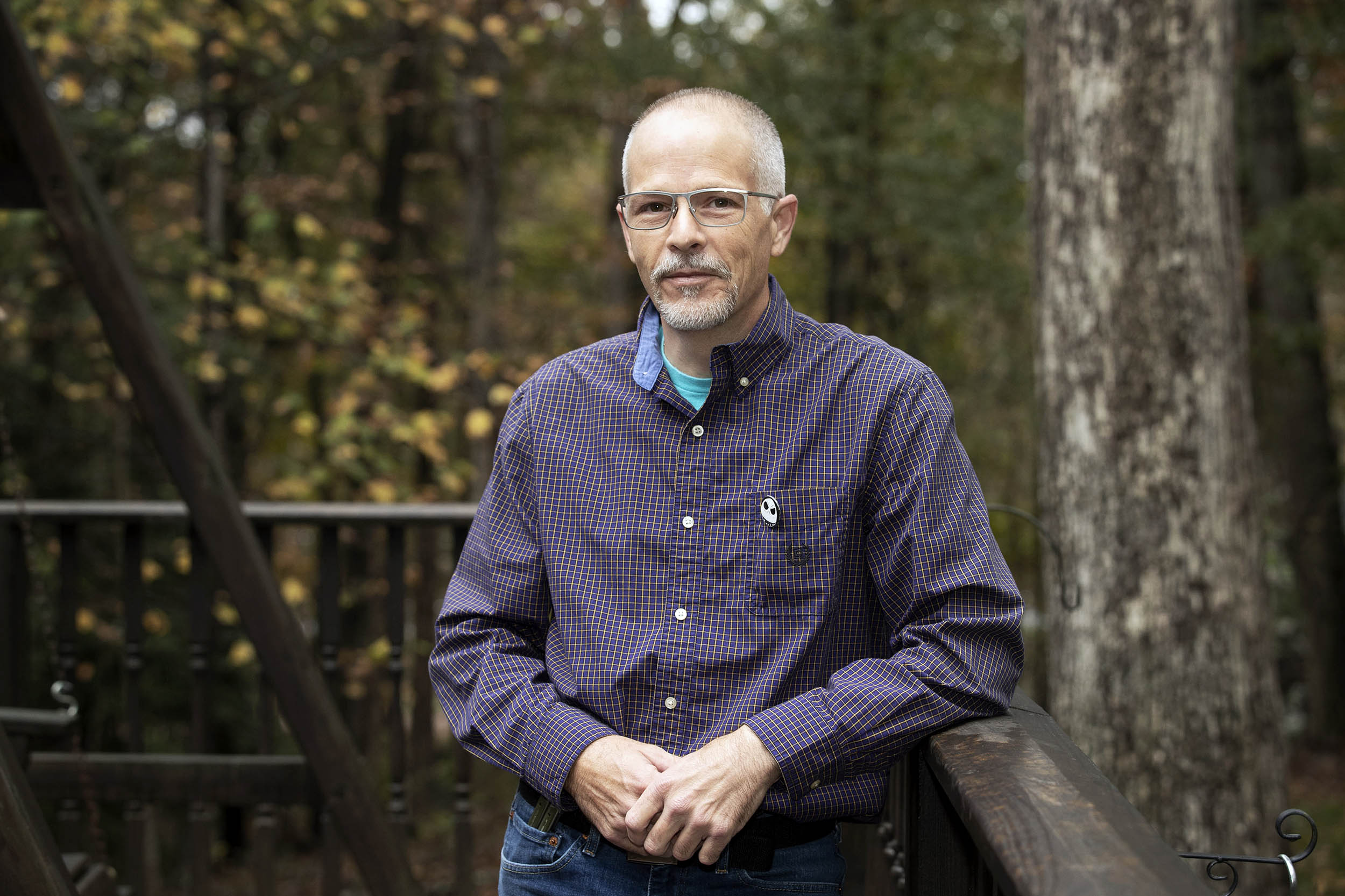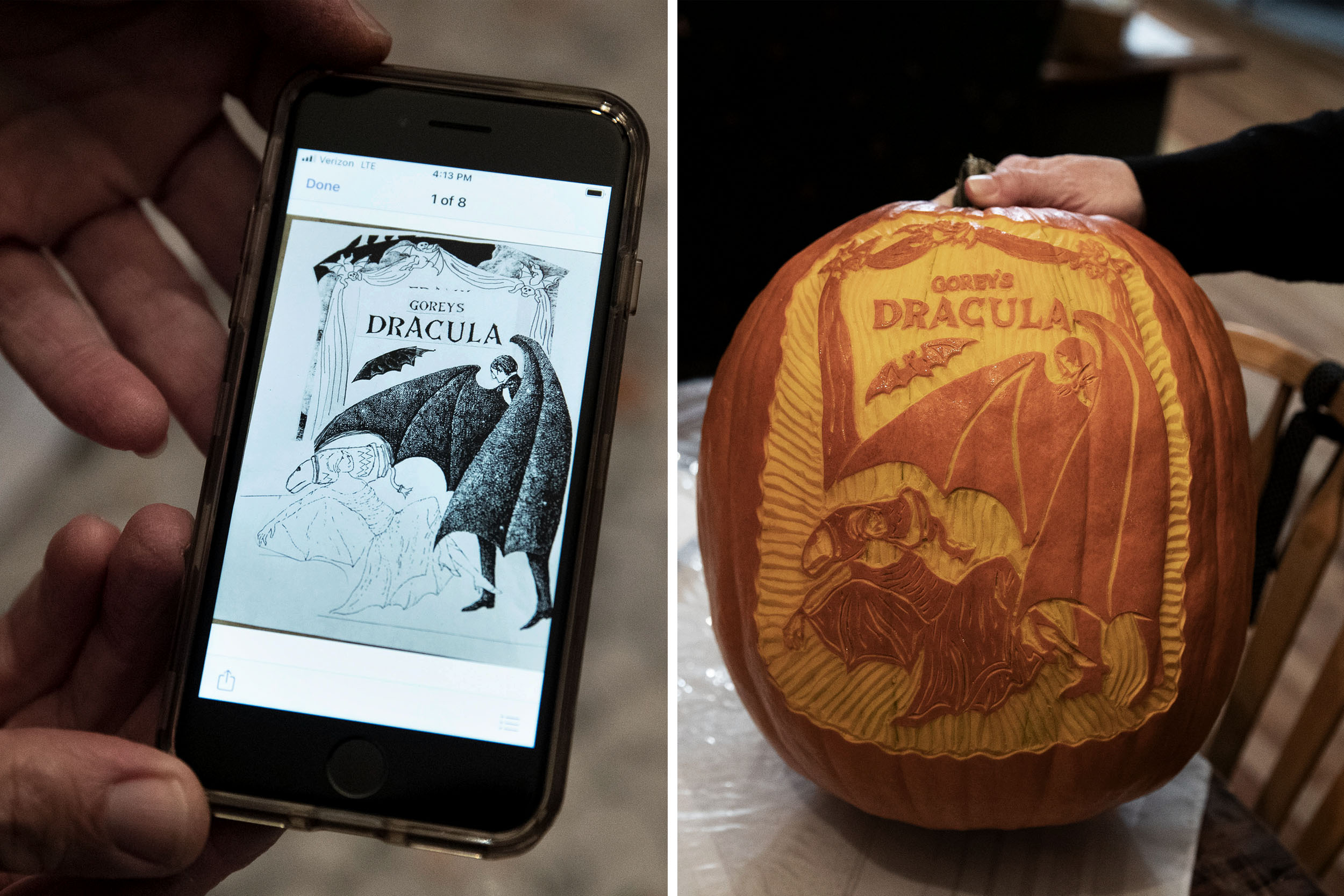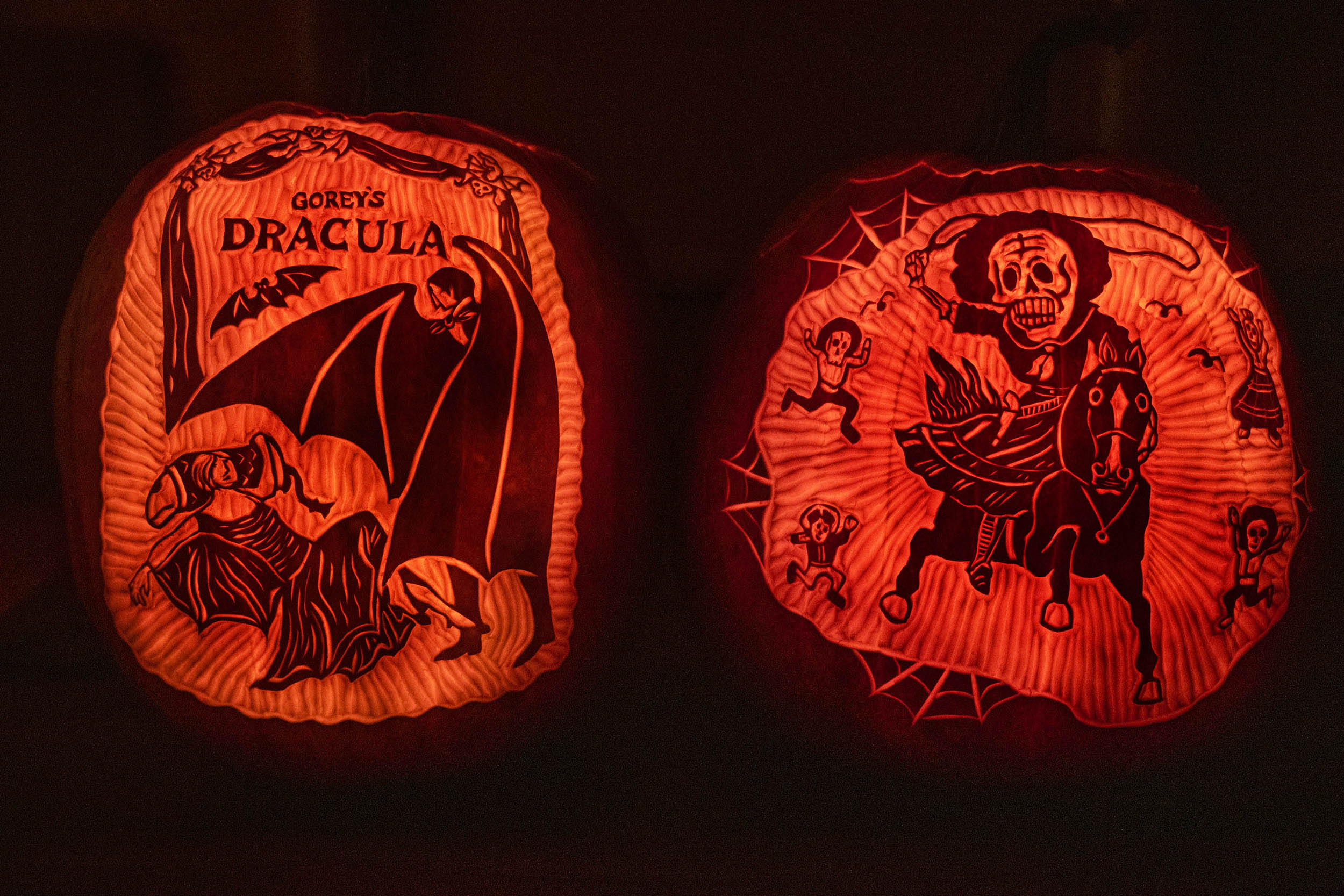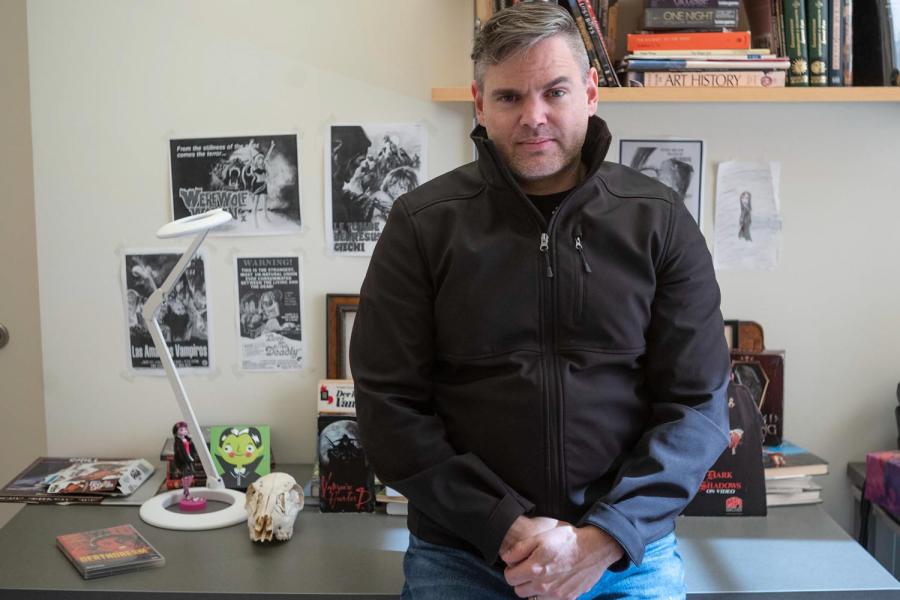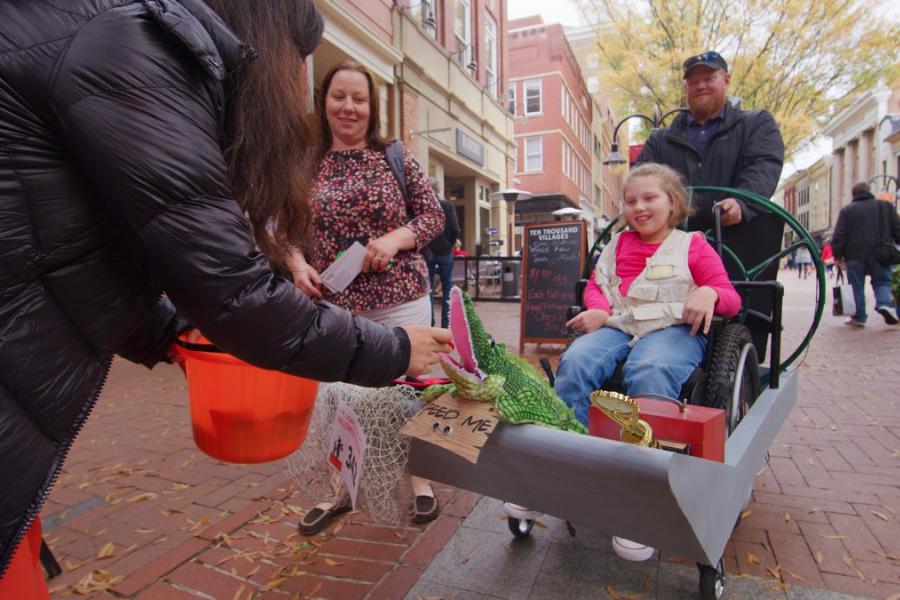While Halloween will be eerily quiet on the University of Virginia’s Grounds this year, the Albert and Shirley Small Special Collections Library once again is displaying spooky carved pumpkins in its windows.
The special collections staff has given experienced carver Ed Morton a dastardly intricate and creepy literary design challenge for the two pumpkins he has transformed with his trusty X-Acto knife (equipped with a bright, tiny light at the tip).
Over the years, Morton, who’s the longtime partner of acquisitions librarian Barbara Hatcher, has become known for his exquisite carvings on pumpkins, and watermelons as well. For the library, he has carved UVA and literary themes – the Rotunda, Edgar Allan Poe and the raven that he wrote about in the poem with its refrain, “Nevermore.”
“He’s carved pumpkins for Harrison/Small for the past few years – usually featured just outside of the Reading Room, but last year we featured them on the front porch and in the windows,” exhibitions coordinator Holly Robertson said.
